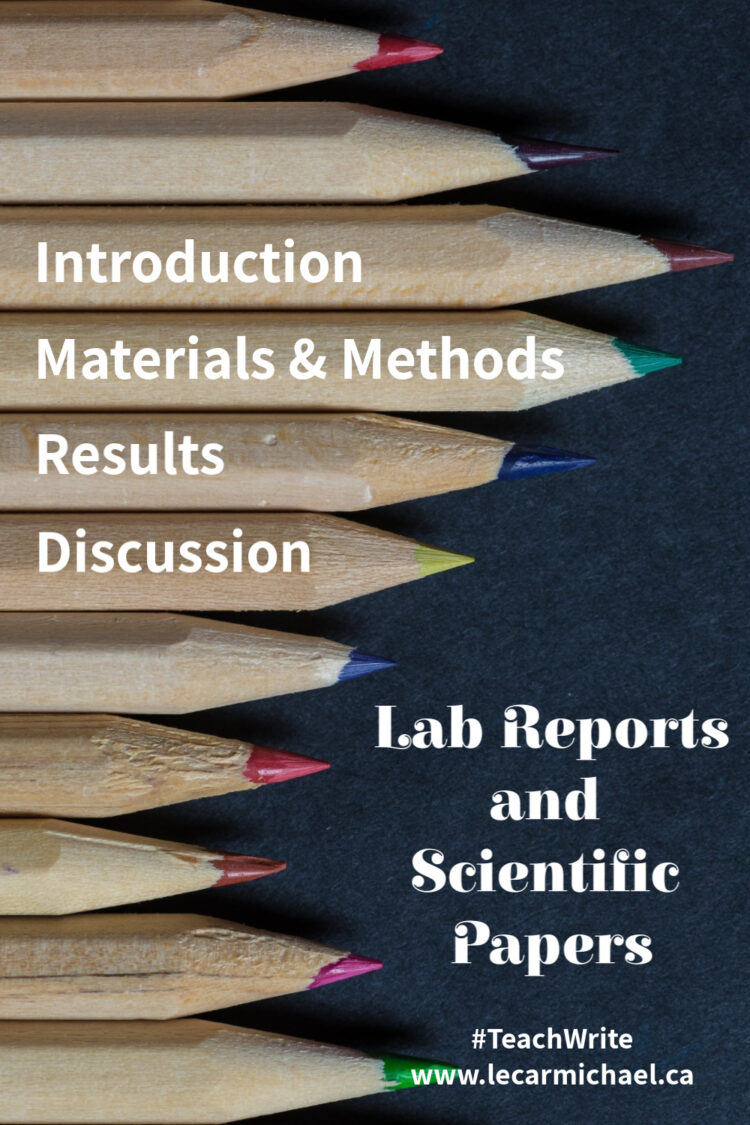 Welcome to Teach Write! This column draws on my 20 years’ experience teaching writing to kids, university students, and adult learners. It includes ideas and exercises that teachers can use in the classroom, and creative writers can use to level up their process.
Welcome to Teach Write! This column draws on my 20 years’ experience teaching writing to kids, university students, and adult learners. It includes ideas and exercises that teachers can use in the classroom, and creative writers can use to level up their process.
If you’re new to this column, we’ve spent the last couple months talking about the influence that our intended audience has on the way we approach a piece of writing, and now we’re discussing purpose – the goal of a piece of writing, and how our intention as writers affects format and style. And what better place to start than lab reports and scientific papers, two closely-related forms that I have extensive personal experience with, what with that whole being-a-scientist thing.
Lab reports and scientific papers are documents that describe experiments. They both follow the IMRAD format:
- Introduction
- Materials and Methods
- Results and
- Discussion.
Depending on the field (and perhaps the journal you hope to publish in), these sections can be split or merged. For example, sometimes Results and Discussion are combined, and sometimes a Discussion section will be split so there is a separate Conclusions section at the end of the paper. An Abstract, which summarizes the most important points of the paper in a single paragraph, might also be included prior to the introduction. More on these sections later. For now, let’s return to purpose.
In this case, the purpose of the paper is a reflection of the audience for each paper. Lab reports are written by students for their instructors. As a result, the purpose of a lab report is to:
- demonstrate to the instructor that you understand what sections an IMRAD paper is supposed to contain, what goes in each section, and what the tone should sound like
- demonstrate to the instructor that you actually understood the point of the experiment, most often an experiment that’s been done a lot of times by a lot of people before you.
Generally, you’ll be doing that while assuming that your primary audience is actually students with your level of experience, so you’ll be including information that your peers would need to know in order to repeat your experiment, and omitting stuff they would think is obvious.
In contrast, scientific papers are written for other professional scientists. Your purpose, therefore, will be to:
- describe brand new results from research no one’s ever done before
- explain any new materials or methods that you developed in order to do your experiments
- prove that your methodology is appropriate to the question you’re trying to answer, meaning
- your results are accurate
- your conclusions are supported by data.
So, while you’ll be following a version of the IMRAD format no matter which document you’re writing, you can imagine that you’ll need to approach the actual writing quite differently.
We’ll take a closer look at each of the sections of an IMRAD paper in later instalments. In the meantime, one of the best ways to get a sense for the differences between lab reports and scientific papers is to read some! For papers, read journals in the field of study you’re working in. For lab reports, ask your instructor for examples. The science section of Afficio, a journal of award-winning undergraduate university papers, is also a great resource.